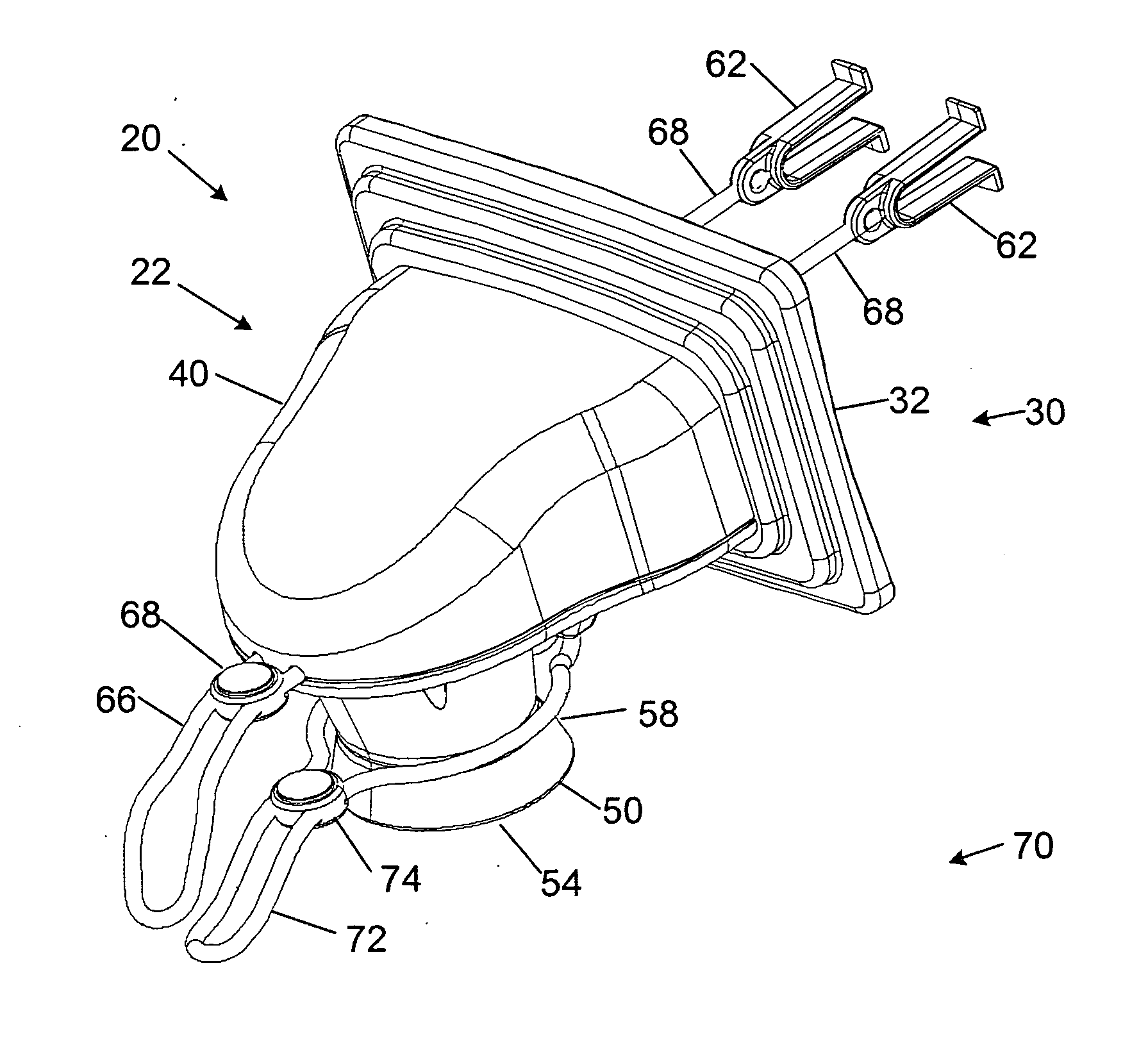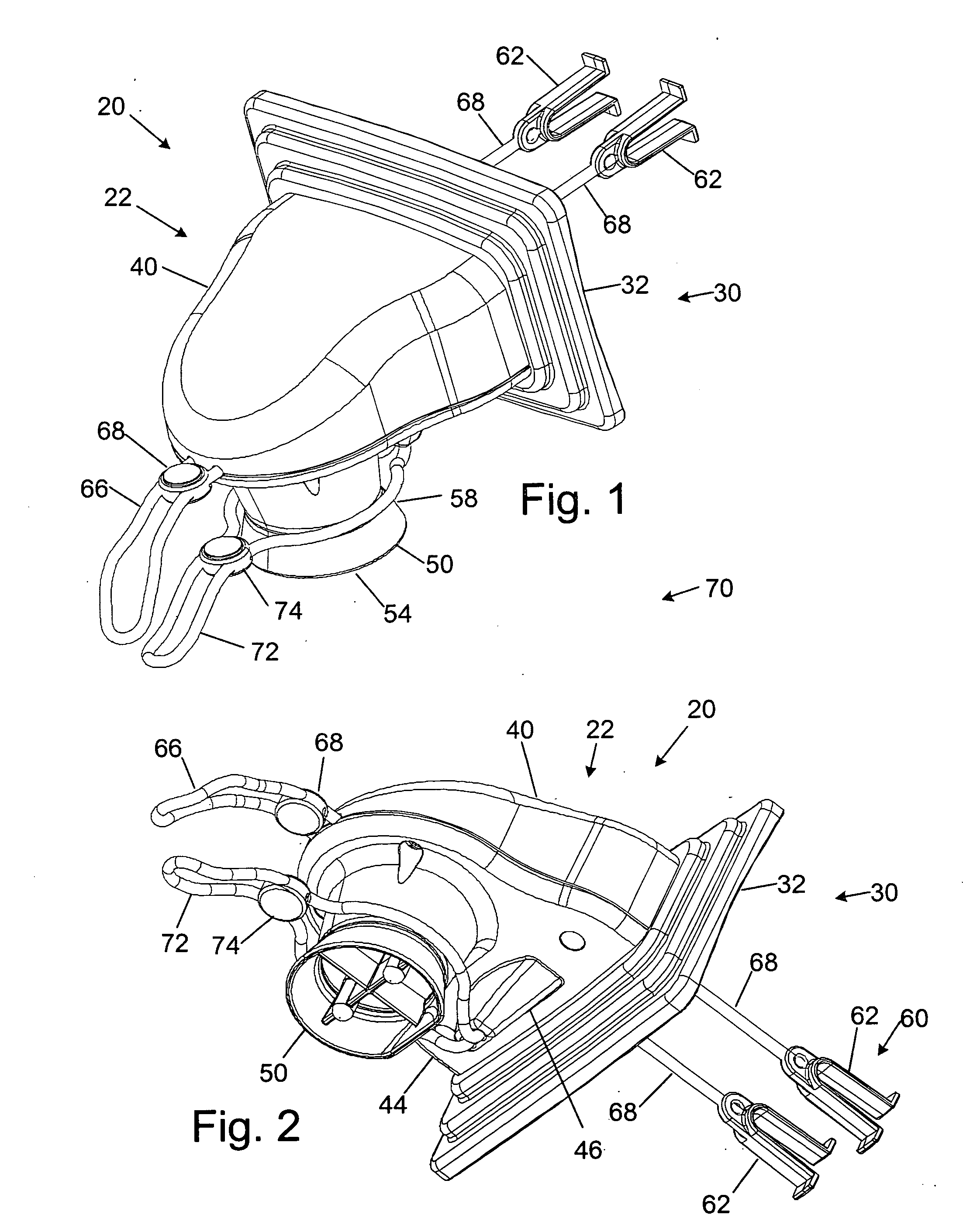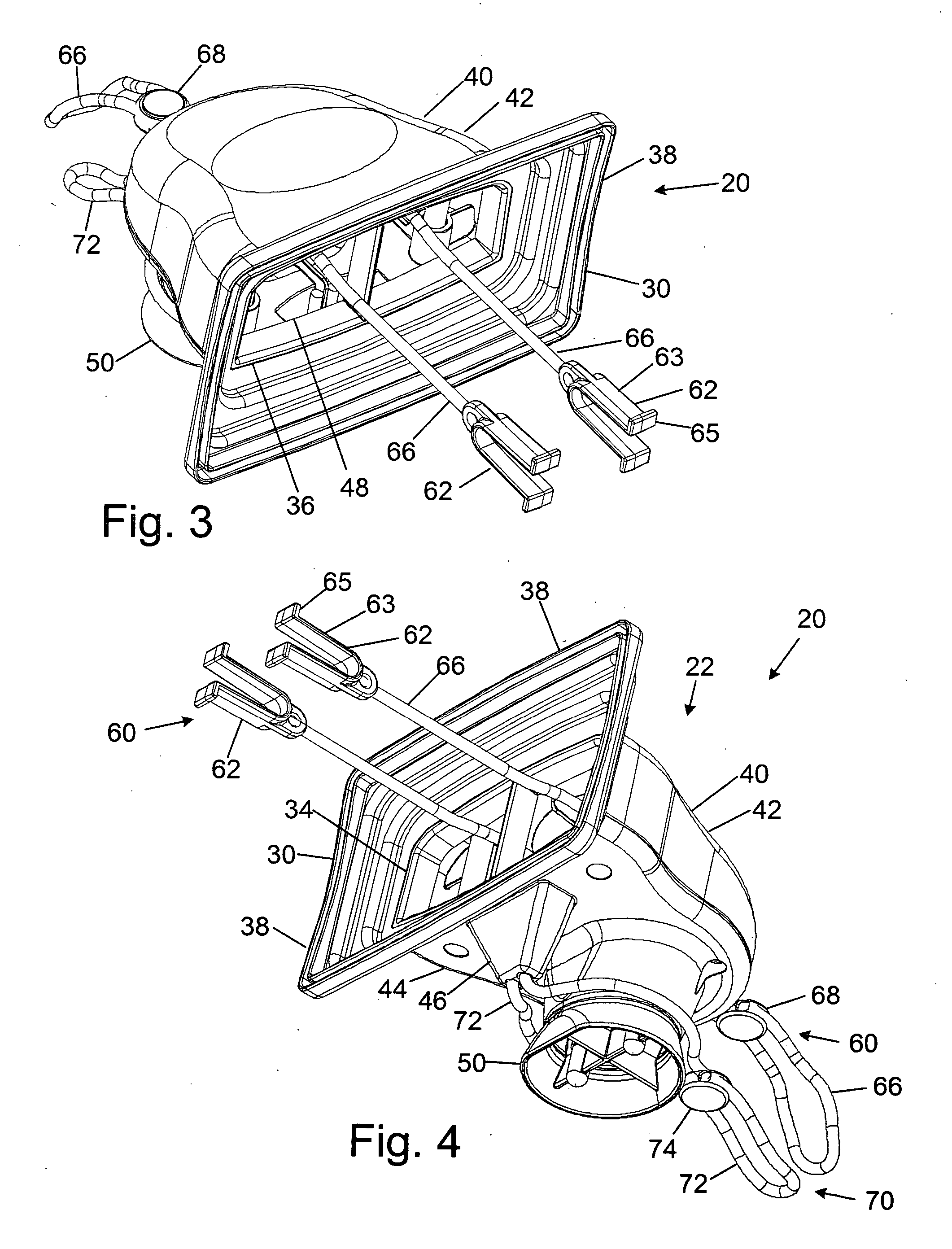Device and method for redirecting airflow from a vent to an article
a technology for redirecting airflow to articles and vents, which is applied in the direction of drying machines, harvesting fruit hanging devices, light and heating equipment, etc. it can solve the problems of wasting hours or days to get the job done, the passive device is almost useless to those shivering in the car, and the active dryer is faster, so as to eliminate moisture from the inside, easy to use and maintain, and adaptable
- Summary
- Abstract
- Description
- Claims
- Application Information
AI Technical Summary
Benefits of technology
Problems solved by technology
Method used
Image
Examples
Embodiment Construction
[0035] The present invention is directed to devices that warm or dry one or more items—such as an article of clothing, such as a glove—by redirecting airflow from a ventilation system over or through the article. Referring to FIGS. 1 through 10, dryer 20 comprises a housing 22 comprising an air-capture portion 30, a body portion 40, and a nozzle portion 50. Dryer 20 further comprises a vent-attachment system 60 and an article-attachment system 70. Referring also to FIGS. 11 and 12, to mount the dryer, the user pinches together legs 63 of each vent catch 62, pushes catch 62 between slats 84 of vent 82, and releases legs 63, causing prong 65 of catch 62 to catch the interior edges of slats 84. Subsequently tightening vent-attachment system 60 pulls air-capture portion 30 over vent 82 to form a sufficiently airtight seal on surrounding surfaces 86.
Air-Capture Portion
[0036] Air-capture portion 30 is a flange 32 projecting from housing 22 and adapted to fit over a ventilation system 8...
PUM
 Login to View More
Login to View More Abstract
Description
Claims
Application Information
 Login to View More
Login to View More - R&D
- Intellectual Property
- Life Sciences
- Materials
- Tech Scout
- Unparalleled Data Quality
- Higher Quality Content
- 60% Fewer Hallucinations
Browse by: Latest US Patents, China's latest patents, Technical Efficacy Thesaurus, Application Domain, Technology Topic, Popular Technical Reports.
© 2025 PatSnap. All rights reserved.Legal|Privacy policy|Modern Slavery Act Transparency Statement|Sitemap|About US| Contact US: help@patsnap.com



